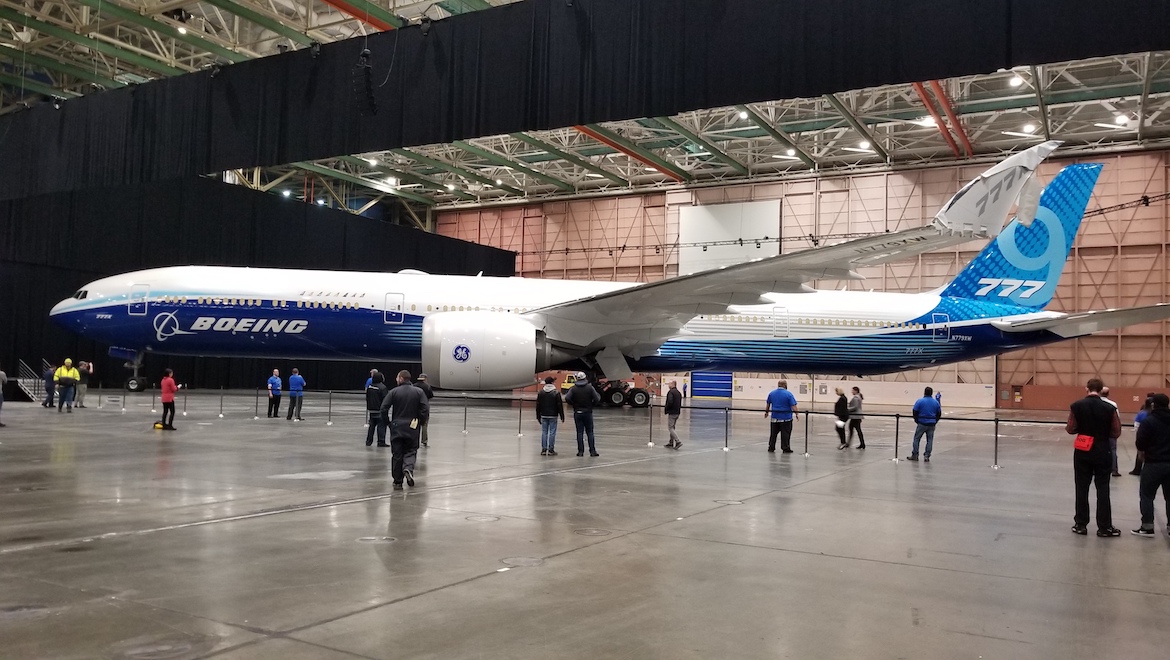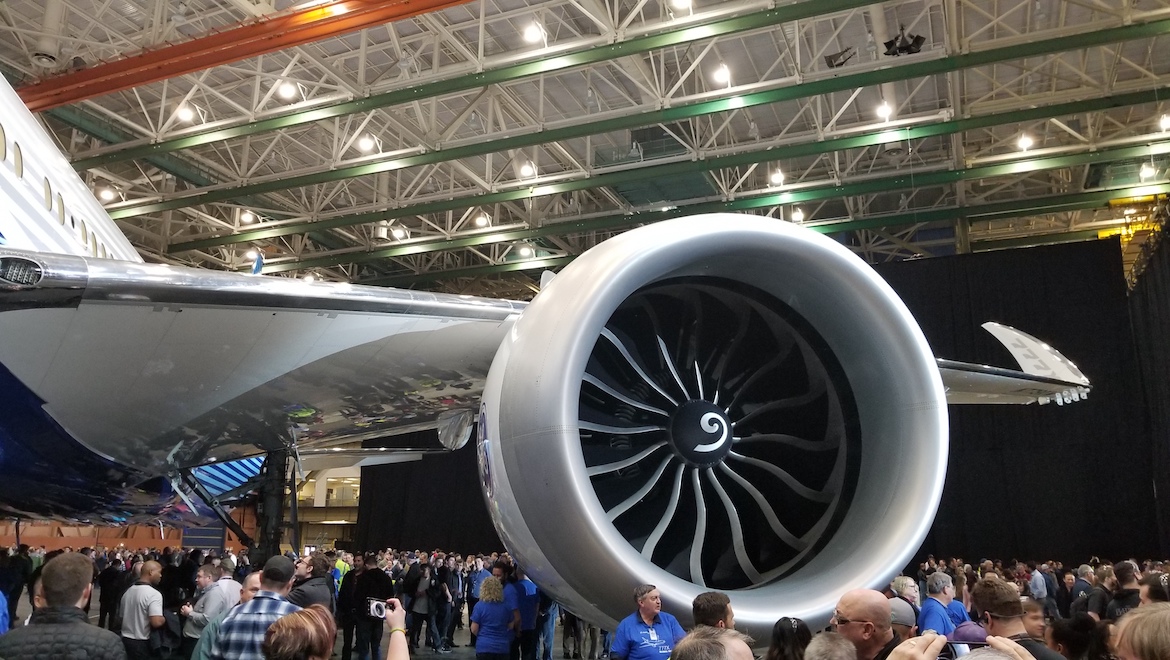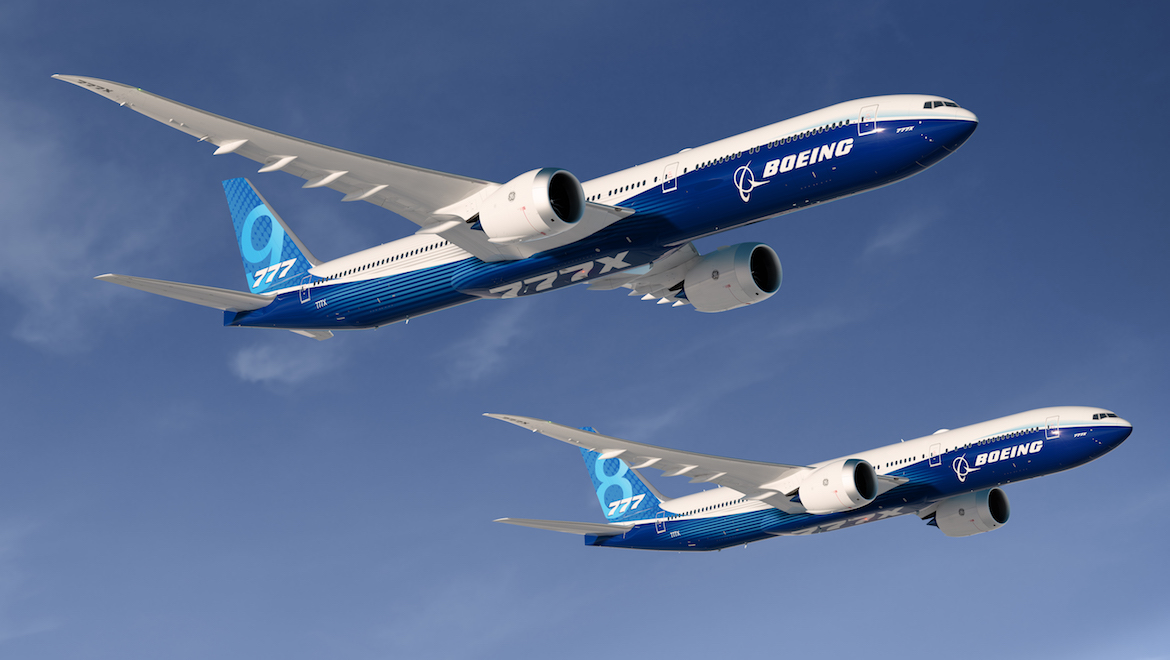
A cargo door on a Boeing 777-9X static test aircraft separated from the fuselage during a high-pressure test as part of the aircraft certification program, media reports say.
The incident occurred on Thursday (US time) at Boeing’s Everett facility in the presence of representatives from the United States Federal Aviation Administration (FAA), according to KOMO journalist Charlie Hager on Twitter.
Sources telling me about an incident that happened during what was meant to be final structural test of new 777X yesterday. Plane was pressurized, under extreme load conditions on the ground. As FAA inspectors watched, door flew off. Story today on @KOMONewsradio #KOMONews 1/3 pic.twitter.com/63W1aYcQl4
— Charlie Harger (@KOMOCharlie) September 6, 2019
The static test aircraft emerged from Boeing’s final assembly line in September 2018. It will never fly. Instead, it was being used to test the structural limits of the airframe.
Boeing confirmed an incident occurred during ground testing in a statement to The Seattle Times, without offering specifics.
“During final load testing on the 777X static test airplane, the team encountered an issue that required suspension of the test,” Boeing told the newspaper.
“The event is under review and the team is working to understand root cause.”
Further, the airframer said the testing conditions were well beyond any load expected in commercial service.
The newspaper said there were no injuries resulting from the door explosion.

The incident is the latest setback for the 777-X program, which has already been forced to delay first flight from the middle of calendar 2019 to early 2020 due to issues with the aircraft’s GE9X engine’s compressor. Despite the delays, Boeing said recently it was still targeting 2020 for first delivery of the 777-9X.
In August, Boeing said it had pushed back the timeline for the entry-into-service of its 777-8X ultra-long range widebody to “reduce risk” in the program. The airframer said the decision to delay first delivery of the 777-8X followed a review of the “development program schedule and the needs of our current 777X customers”.
https://www.facebook.com/Boeing/videos/vb.115537125141500/450911565455572
THE 777-X IS A TWO-AIRCRAFT FAMILY
Launched in 2013, the 777-X family of aircraft comprise the 777-8X and 777-9X variants. The pair is an upgrade from Boeing’s in-production 777-200LR and and 777-300ER.
In addition to the new GE Aviation GE9X engines, features of the 777-X family included composite wings with folding wingtips to maintain its Code E rating at airports, as well as in-cabin enhancements such as larger overhead stowage and a wider cross section.

The 777-9X is 77 metres in length and has a total wingspan of 72 metres with its wingtips extended. It is capable of flying 7,285nm when carrying 426 passengers in a two-class configuration, according to Boeing figures.
It has been pitched as the ideal replacement for the very large aircraft segment of the market, especially in light of Airbus’s decision to cancel the A380 program.
Meanwhile, the 777-8X is still in development. The Boeing website lists the aircraft as having a range of 8,690nm and a passenger capacity of 384 passengers in a two-class layout. In addition to being a candidate for Qantas’s Project Sunrise, the 777-8X is also a potential replacement for the in-service Boeing 777-300ER.
The 777-X program had received 344 orders at July 31 2019 according to the Boeing website.












